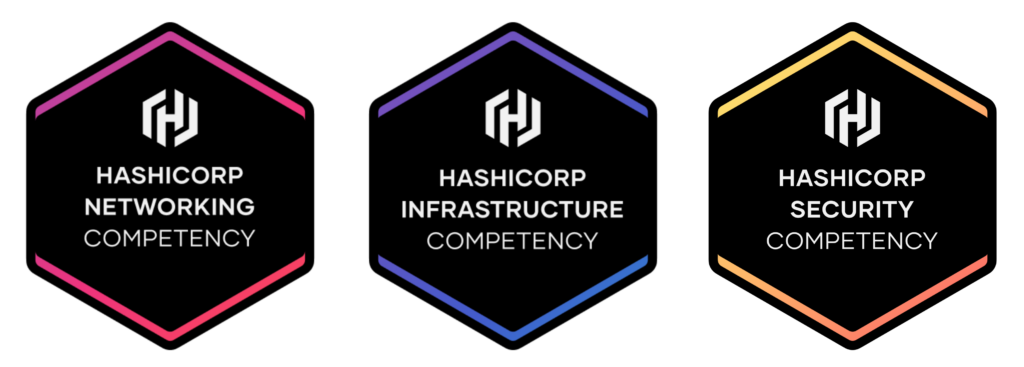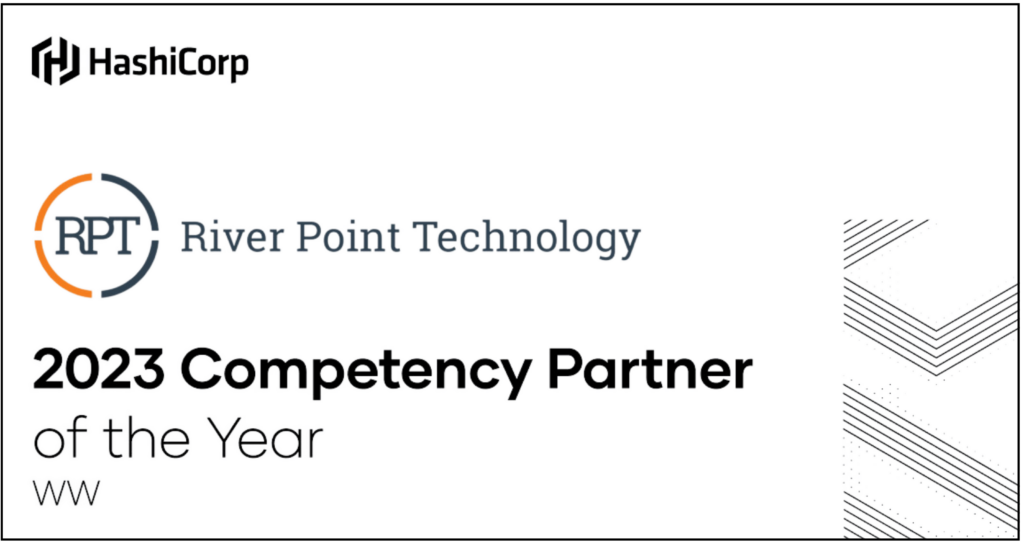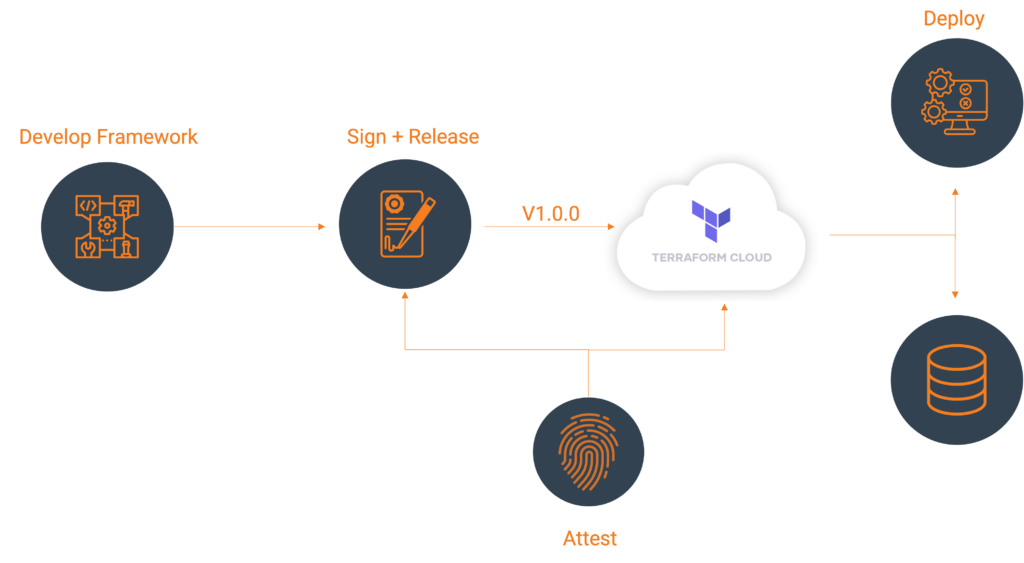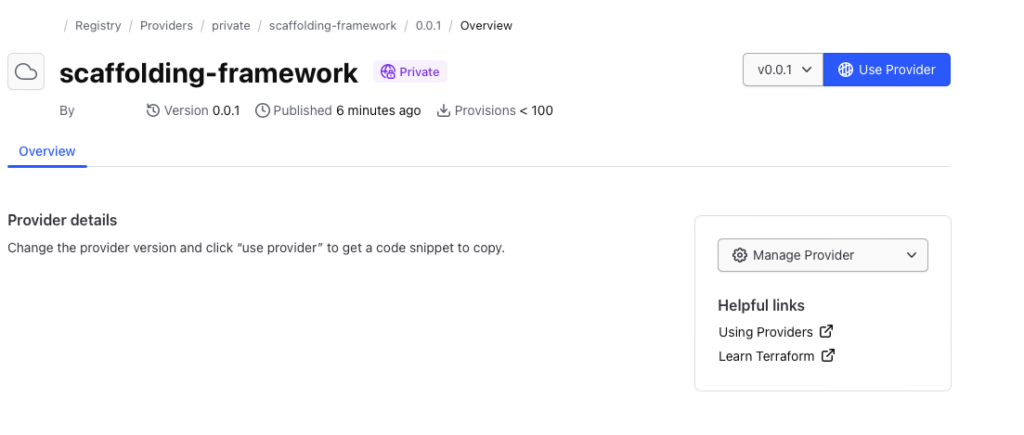As organizations manage their digital transformation initiatives in today’s business world, their technology investments are often viewed under a microscope. Do they align with strategic objectives? Do they support the company’s innovation goals? Will they pose a business risk? And of course, how cost effective is the investment? Is it a financially responsible choice and what’s the ROI? When it comes to costs associated with protecting an organization’s vital resources, infrastructure, and data, many CTOs, CISOs, and CIOs have to weigh the cost of investment in new technologies vs relying on legacy systems that actually increase their exposure to nefarious actors.
The simple truth is that the typical security methods employed by many enterprises today often come with hidden costs: potential for costly breaches, increased vulnerability, wasted man-hours, and operational inefficiencies. This is where HashiCorp Vault and Boundary come in. When leveraged together they deliver a host of benefits, including cost optimization, streamlined workflows, simplified compliance, and of course they reduce the risk and minimize the financial impact of security incidents.
Understanding the Traditional Cost Conundrum
Before exploring how Vault and Boundary save money, let’s examine the cost burdens associated with traditional security approaches:
- Inefficient Access Management: Manual provisioning and management of passwords, access controls, and VPNs are time-consuming and error-prone, requiring additional IT resources and increasing operational costs.
- Scattered Configurations: Lack of centralized control leads to inconsistencies and vulnerabilities, requiring more resources for monitoring and maintenance, further adding to the expenses.
- Compliance Challenges: Manually handling compliance requirements can be complex and resource-intensive, potentially leading to non-compliance fines and reputational damage, both of which can be financially detrimental.
- Increased Downtime: Security breaches caused by weak access control or outdated methods can result in costly downtime, impacting productivity and revenue.
Cost-Saving Advantages of Vault and Boundary
By integrating Vault and Boundary, organizations can unlock cost-saving benefits without compromising their organization’s security posture:

- Reduced Administrative Burden:
- Automation Powerhouse: Vault automates secrets management tasks like generation, rotation, and revocation, while Boundary automates access control based on pre-defined policies. This frees up IT staff to focus on strategic innovations, reducing labor costs associated with manual processes.
- Centralized Control: Managing secrets and access from a single platform eliminates the need for managing scattered configurations across multiple systems, minimizing administrative overhead and associated fees.
- Enhanced Efficiency and Productivity:
- Streamlined Workflows: Automating tasks and simplifying access control processes improve efficiency for both the IT team and users, saving time and effort that can be directed towards more strategic endeavors.
- Reduced Downtime: By minimizing the attack surface and offering high availability through tools like Vault and Boundary, you can help prevent security breaches and related downtime, saving on costs associated with business disruptions and lost productivity.
- Simplified Compliance Management:

- Built-in Features: Both tools offer features and integrations that help organizations comply with industry standards and regulations, potentially reducing the need for additional tools or external expertise, leading to cost savings.
- Reduced Risk of Non-Compliance Fines: By simplifying and automating compliance efforts, Vault and Boundary can help organizations avoid potential fines and penalties associated with non-compliance, saving significant financial resources.
- Indirect Cost Savings:
- Enhanced Security: By minimizing the attack surface, reducing the impact of breaches, and enforcing least privilege principles, Vault and Boundary can help organizations avoid the financial costs associated with data breaches, including recovery efforts, reputational damage, and potential legal issues.
- Improved User Experience: Secure and streamlined access management can lead to increased user satisfaction and productivity, potentially reducing the need for user support and associated costs.

Long-Term Value Proposition:
While the upfront costs of acquiring and implementing Vault and Boundary should be considered, the opportunity for cost savings over the long term through increased efficiency, reduced downtime, improved security, and simplified compliance makes the investment financially sound.
By implementing HashiCorp Vault and Boundary together, organizations can optimize their financial investment in both platforms. Through automation, centralization, and streamlined workflows, these powerful tools empower organizations to achieve a balance between robust security and financial sustainability, paving the way for an organization to achieve long-term success in the ever-evolving digital world.
Need help maximizing the benefits of using Vault & Boundary? Contact the experts at RPT. As HashiCorp’s 2023 Global Competency of the Year and the only HashiCorp partner with all 3 certifications (Security, Infrastructure, & Networking), you know you’re working the leading HashiCorp services partner. Contact [email protected] today.
About River Point Technology
River Point Technology (RPT) is an award-winning cloud and DevOps service provider that helps Fortune 500 companies accelerate digital transformation and redefine what is possible. Our passionate team of engineers and architects simplify the deployment, integration, and management of emerging technology by delivering state-of-the-art custom solutions. We further position organizations to experience Day 2 success at scale and realize the value of their technology investments by offering best-in-class enablement opportunities. These include the subscription-based RPT Resident Accelerator program that’s designed to help enterprises manage the day-to-day operations of an advanced tech stack, the just-launched RPT Connect App, and our expert-led training classes. Founded in 2011, our unique approach to evaluating and adopting emerging technology is based on our proprietary and proven Value Creation Technology process that empowers IT teams to boldly take strategic risks that result in measurable business impact. What’s your vision? Contact River Point Technology today and see what’s possible.
The sky’s the limit for River Point Technology! In a groundbreaking achievement, this past fall RPT became the first global HashiCorp partner to snag all three coveted competency badges: Infrastructure, Security, and Networking. This phenomenal feat, coupled with our recent title of HashiCorp Global Competency Partner of the Year, solidifies RPT’s position as a market leader and trusted advisor for Fortune 500 companies navigating the ever-evolving cloud landscape.

“As the first partner to pursue and achieve the Networking competency, we’re beyond ecstatic to now claim the distinction of holding all three badges,” shared Jeff Eiben, CEO of River Point Technology. “This is a testament to our relentless pursuit of excellence and our team’s deep-seated expertise across the entire cloud spectrum. We’re incredibly proud of their dedication to helping enterprises accelerate their infrastructure automation journeys and maximize their technology investments!”

“We’re excited that River Point Technology is the first partner to achieve certification in Infrastructure, Security and Networking. As HashiCorp’s Global Competency Partner of the Year in 2023, we’re confident they’ll remain dedicated to empowering businesses and customers on their cloud journeys,” said Leon Jones, VP Worldwide Partner Ecosystem at HashiCorp.
RPT’s award-winning team, comprised of some of the world’s best IT, cloud, and DevOps experts, delivers a comprehensive suite of consulting offerings, including:
- Cloud management: Optimization of cloud resources for cost efficiencies & operational excellence.
- Application modernization: State-of-the-art solutions help you develop faster & better.
- Digital transformation: Our experts guide you on the journey & give you the competitive edge.
- Agile DevOps: Our robust DevOps practices result in faster dev cycles & enhanced software quality.
- Continuous Improvement & Delivery (CI/CD): We help drive operational efficiency to optimal return on tech investment.
And it doesn’t stop there! RPT’s 5-star training programs, covering leading cloud platforms like the HashiCorp suite, equip individuals and teams with the skills to become cloud masters. Our private group training is not only top ranked, but led by some of the industry’s leading practitioners and experts who can cater programs based on your organization’s specific needs. Plus, our subscription-based enablement offering, the RPT Accelerator, can help you achieve Day 2 cloud success, ensuring your organization’s ongoing optimization and value realization of their technology investment.
(insert image showing training, consulting, enablement)
With unparalleled expertise and dedication to customer success, RPT is poised to continue leading the way in cloud consulting and enablement. By empowering organizations to leverage the cloud effectively, we help them achieve their full potential and accelerate their journey towards digital transformation. How can we help you?
HashiCorp’s Terraform Cloud provides a centralized platform for managing infrastructure as code. It’s a leading provider in remote Terraform management with remote state management, automated VCS integrations, and cost visibility. One of its features, a private registry, can be used to develop internal Terraform providers where control, security, and customizations are paramount.
Let’s explore an example using the Terraform Provider Scaffolding Framework to build a custom Terraform provider and publish it to a private registry. Scaffold provides a framework starter kit that you can use out of the box to replace your APIs.
Signing Your Provider
Code signing guarantees that the generated artifacts originate from your source, allowing users to verify this authenticity by comparing the produced signature with your publicly available signing key. It will require you to generate a key pair through the GNU PGP utility. You can develop this by using the command below, be sure to replace GPG_PASSWORD and your name with values that make sense.
gpg --default-new-key-algo rsa4096 --batch --passphrase "${GPG_PASSWORD}" --quick-gen-key 'Your Name <[email protected]>' default defaultExport Public Key
With your newly generated key securely stored, the next step involves exporting and uploading it to Terraform Cloud. This action facilitates verification while deploying your signed artifacts, and ensuring their authenticity within the platform’s environment. The GPG Key API requires the public key to validate the signature. To access the list of key IDs, you can execute: gpg --list-secret-keys --keyid-format LONG. The key is denoted in the output.
[keyboxd]
---------
sec rsa4096/<KEY ID> 2023-11-22 [SC] [expires: 2026-11-21]You can then get your public key as a single string. KEY=$(gpg --armor --export ${KEY_ID} | awk '{printf "%sn", $0}'). You’ll then need to build a payload with the output of that file and POST that to https://app.terraform.io/api/registry/private/v2/gpg-keys. The ORG_NAME is your Terraform cloud organization.
{
"data": {
"type": "gpg-keys",
"attributes": {
"namespace": "${ORG_NAME}",
"ascii-armor": "${KEY}"
}
}
}Export Private Key for CI/CD (Optional)
If you plan to use this key in a CI Platform, you can also export the key and upload it gpg --export-secret-keys --armor ${KEY_ID} > /tmp/gpg.pgp to a secure Vault.
Packaging Terraform Providers with GoReleaser
GoReleaser simplifies the process of building and releasing Go binaries. Using GoReleaser, we can bundle different architectures, operating systems, etc.
You will need to create a terraform registry manifest, the protocol version is essential. If you are using Plugin Framework, you will want version 6.0. If you are using Plugin SDKv2, you will want version 5.0.
{
"version": 1,
"metadata": {
"protocol_versions": ["6.0"]
}
}Configuring GoReleaser
Ensure your goreleaser.yml configuration includes settings for multi-architecture support and signing. This file should live at the provider’s root, next to your main codebase.
before:
hooks:
- go mod tidy
builds:
- env:
- CGO_ENABLED=0
mod_timestamp: '{{ .CommitTimestamp }}'
flags:
- -trimpath
ldflags:
- '-s -w -X main.version={{ .Version }} -X main.commit={{ .Commit }}'
goos:
- freebsd
- windows
- linux
- darwin
goarch:
- amd64
- '386'
- arm
- arm64
ignore:
- goos: darwin
goarch: '386'
binary: '{{ .ProjectName }}_v{{ .Version }}'
archives:
- format: zip
name_template: '{{ .ProjectName }}_{{ .Version }}_{{ .Os }}_{{ .Arch }}'
checksum:
extra_files:
- glob: 'terraform-registry-manifest.json'
name_template: '{{ .ProjectName }}_{{ .Version }}_manifest.json'
name_template: '{{ .ProjectName }}_{{ .Version }}_SHA256SUMS'
algorithm: sha256
signs:
- artifacts: checksum
args:
- "--batch"
- "--local-user"
- "{{ .Env.GPG_FINGERPRINT }}"
- "--output"
- "${signature}"
- "--detach-sign"
- "${artifact}"
stdin: '{{ .Env.GPG_PASSWORD }}'
release:
extra_files:
- glob: 'terraform-registry-manifest.json'
name_template: '{{ .ProjectName }}_{{ .Version }}_manifest.json'
changelog:
skip: trueTag your Branch
git tag 0.0.1
git checkout 0.0.1Your git strategy may differ, but GoReleaser uses branch tags to determine versions.
Bundle and Sign Binaries
Execute GoReleaser to bundle the binaries locally without publishing. We skipped publishing as we will manually upload them to Terraform Cloud.
export GPG_TTY=$(tty)
export GPG_FINGERPRINT=${KEY_ID}
goreleaser release --skip=publish
Now we have our artifacts.
Publishing to Terraform Cloud Private Registry
Once you have the signed binaries, you can publish them to the Terraform Cloud private registry. HashiCorp provides a guide, which we will follow.

Register the provider (first time only)
Create a provider config file and POST that body utilizing your Terraform Cloud API token. A provider name is usually a singular descriptor representing a business unit, such as Google or AWS.
curl --header "Authorization: Bearer ${TERRAFORM_CLOUD_API_TOKEN}"
--header "Content-Type: application/vnd.api+json"
--request POST
-d @-
"https://app.terraform.io/api/v2/organizations/${ORG_NAME}/registry-providers" <<EOT
{
"data": {
"type": "registry-providers",
"attributes": {
"name": "${PROVIDER_NAME}",
"namespace": "${ORG_NAME}",
"registry-name": "private"
}
}
}
EOTUploading your Versions
Create Version Shell within Private Registry Providers
curl -H "Authorization: Bearer ${TOKEN}"
-H "Content-Type: application/vnd.api+json"
--request POST
-d @-
"https://app.terraform.io/api/v2/organizations/${ORG_NAME}/registry-providers/private/${ORG_NAME}/${PROVIDER_NAME}/versions" <<EOT
{
"data": {
"type": "registry-provider-versions",
"attributes": {
"version": "${VERSION}",
"key-id": "${KEY_ID}",
"protocols": ["6.0"]
}
}
}
EOTThe response will contain upload links that you will use to upload the SHA256SUMS and SHA256.sig files.
"links": {
"shasums-upload": "https://archivist.terraform.io/v1/object/dmF1b64hd73ghd63",
"shasums-sig-upload": "https://archivist.terraform.io/v1/object/dmF1b37dj37dh33d"
}Upload Signatures.
# Replace ${VERSION} and ${PROVIDER_NAME} with actual values
curl -sS -T "dist/terraform-provider-${PROVIDER_NAME}_${VERSION}_SHA256SUMS" "${SHASUM_UPLOAD}"
curl -sS -T "dist/terraform-provider-${PROVIDER_NAME}_${VERSION}_SHA256SUMS.sig" "${SHASUM_SIG_UPLOAD}"Register Platform for every Architecture and Operating System.
FILENAME="terraform-provider-${PROVIDER_NAME}_${VERSION}_${OS}_${ARCH}.zip"
SHA=$(shasum -a 256 "dist/${FILENAME}" | awk '{print $1}' )
# OS ex. darwin/linux/windows# ARCH ex. arm/amd64# FILENAME. terraform-provider-<PROVIDER_NAME>_<VERSION>_<OS>_<ARCH>.zip. Define through name_template
curl -H "Authorization: Bearer ${TOKEN}"
-H "Content-Type: application/vnd.api+json"
--request POST
-d @-
"https://app.terraform.io/api/v2/organizations/${ORG_NAME}/registry-providers/private/${ORG_NAME}/${PROVIDER_NAME}/versions/${VERSION}/platforms" << EOT
{
"data": {
"type": "registry-provider-version-platforms",
"attributes": {
"shasum": "${SHA}",
"os": "${OS}",
"arch": "${ARCH}",
"filename": "${FILENAME}"
}
}
}
EOTThe response will contain upload the provider binary to:
"links": {
"provider-binary-upload": "https://archivist.terraform.io/v1/object/dmF1b45c367djh45nj78"
}Upload archived binaries
curl -sS -T "dist/${FILENAME}" "${PROVIDER_BINARY_URL}"Repeat step: Register Platform for every Architecture and Operating System and step: Upload Archived Binaries for every architecture and operating system.
Using the provider
Private providers hosted within Terraform Cloud are only available to users within the organization.

When developing locally, ensure you set up credentials through the terraform login, creating a credentials.tfrc.json file.
With the authentication bits setup, you can utilize the new provider by defining the provider block substituting in those existing variables.
terraform {
required_providers {
${PROVIDER_NAME} = {
source = "app.terraform.io/${ORG_NAME}/${PROVIDER_NAME}"
version = "${VERSION}"
}
}
}
provider "${PROVIDER_NAME}" {
# Configuration options
}Document Provider
For user consumption, a common practice is to provide provider documentation for your resources utilizing Terraform plugin docs. This plugin generator allows you to generate markdowns from examples and schema definitions, which users can then consume. At the time of publication, this feature is currently not supported within the Terraform Cloud. Please talk to your River Point Technology representative for alternative solutions.
Cleanup
To remove the provider from the registry:
Delete version
curl -H "Authorization: Bearer ${TOKEN}"
--request DELETE
"https://app.terraform.io/api/v2/organizations/${ORG_NAME}/registry-providers/private/${ORG_NAME}/${PROVIDER_NAME}/versions/${VERSION}"Delete provider
curl -H "Authorization: Bearer ${TOKEN}"
--request DELETE
"https://app.terraform.io/api/v2/organizations/${ORG_NAME}/registry-providers/private/${ORG_NAME}/${PROVIDER_NAME}"Deregister GPG Key
curl -H "Authorization: Bearer ${TOKEN}"
--request DELETE
https://app.terraform.io/api/registry/private/v2/gpg-keys/${ORG_NAME}/${KEY_ID}Conclusion
With a private registry, you get all the benefits of Terraform while still allowing internal consumption. This may be desirable when public providers don’t meet your use case and it comes with a host of benefits:
- More Customization and Control: A private registry allows organizations to maintain control over their proprietary or custom-built Terraform providers. It enables them to manage, version, and distribute these providers securely within the organization.
- Better Security and Compliance: A private registry ensures that only authorized users within the organization can access and utilize specific Terraform providers for sensitive or proprietary infrastructure configurations. This control aids in compliance with internal policies and regulatory requirements.
- Improved Versioning and Stability: With a private registry, teams can maintain a stable versioning system for their Terraform providers. This helps ensure project infrastructure configurations remain consistent and compatible with the specified provider versions.
Publishing custom Terraform providers to the Terraform Cloud private registry involves bundling, signing, and uploading binaries and metadata through the API. Following these steps, you can effectively manage and distribute your Terraform provider to support various architectures and operating systems.
River Point Technology (RPT) is here to guide you through the intricacies of exploring the dynamic cloud landscape. If you’re facing challenges and need assistance in achieving increased customization and oversight, enhanced security and compliance, along with improved versioning and stability, feel free to leave a comment or reach out to us directly.
As the HashiCorp Global Competency Partner of the Year and the only company certified in all three competencies—Security, Networking, and Infrastructure—we stand out as a market leader. Trusted by Fortune 500 companies, we serve as their guide in effectively navigating the dynamic cloud terrain. Contact RPT for guidance in optimizing the journey through the cloud landscape.